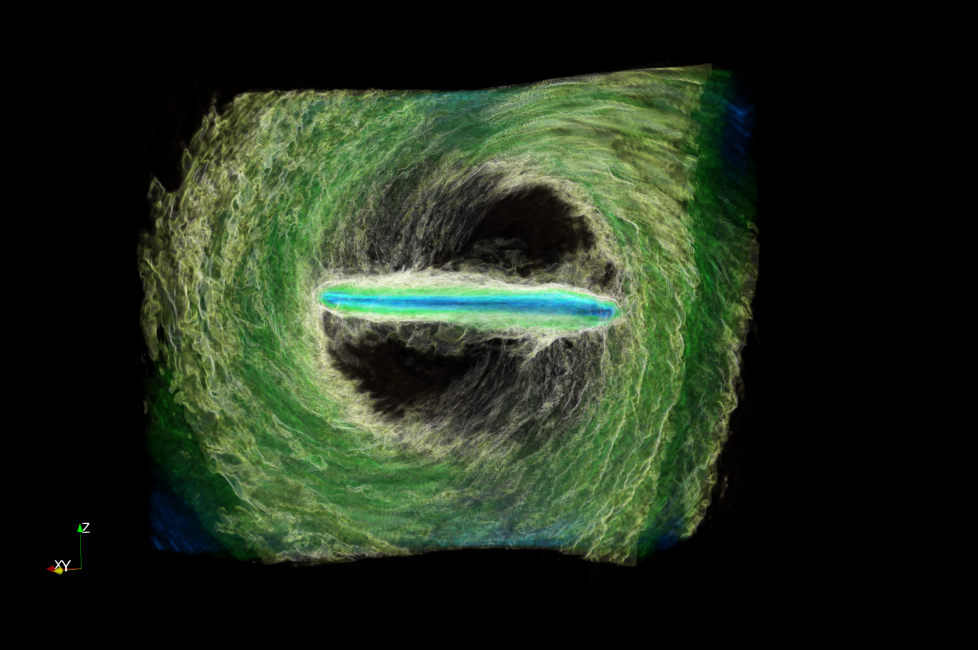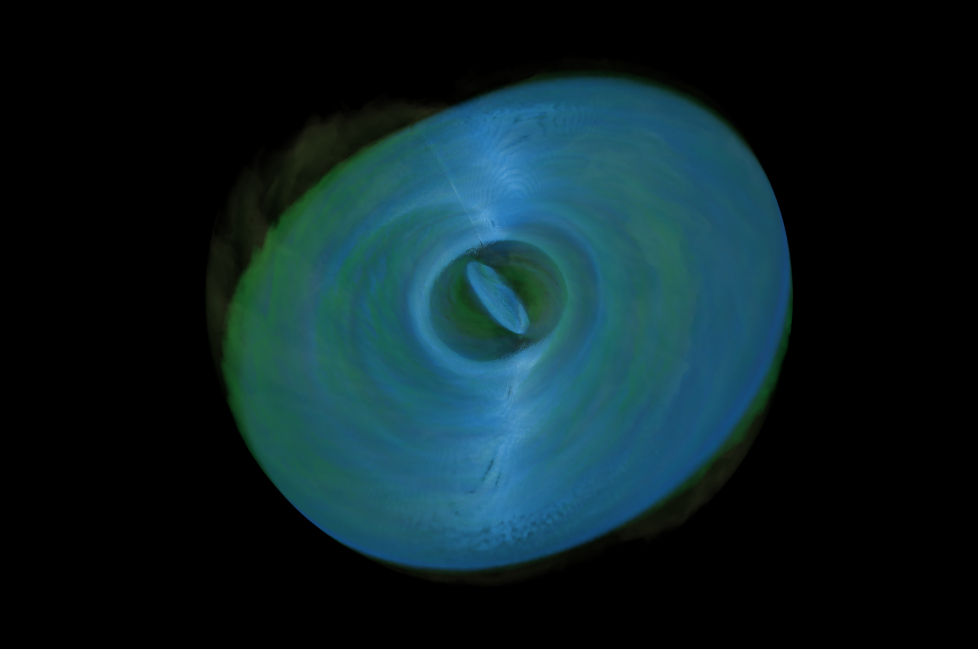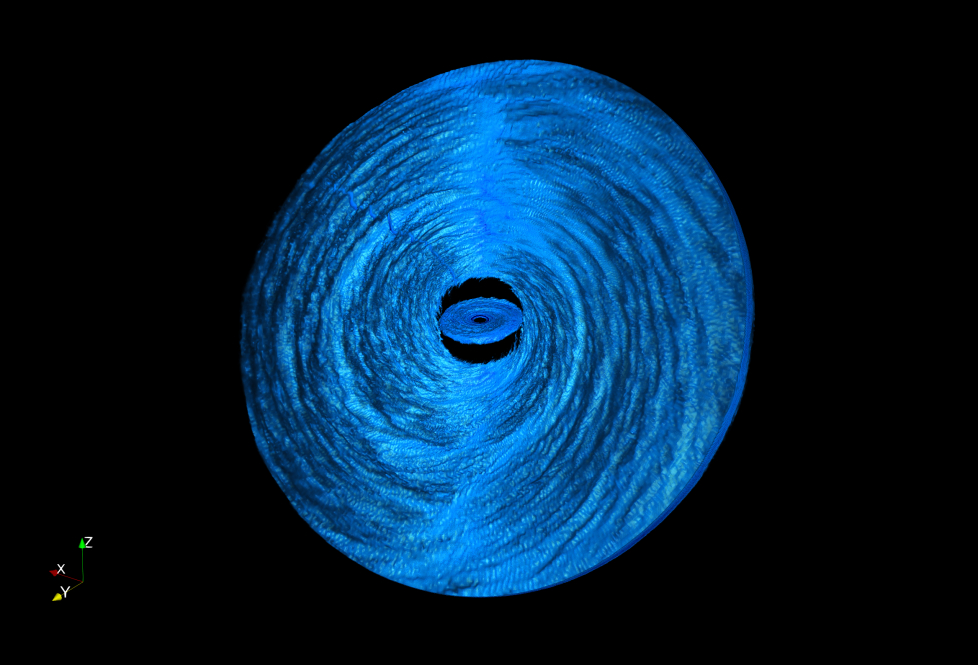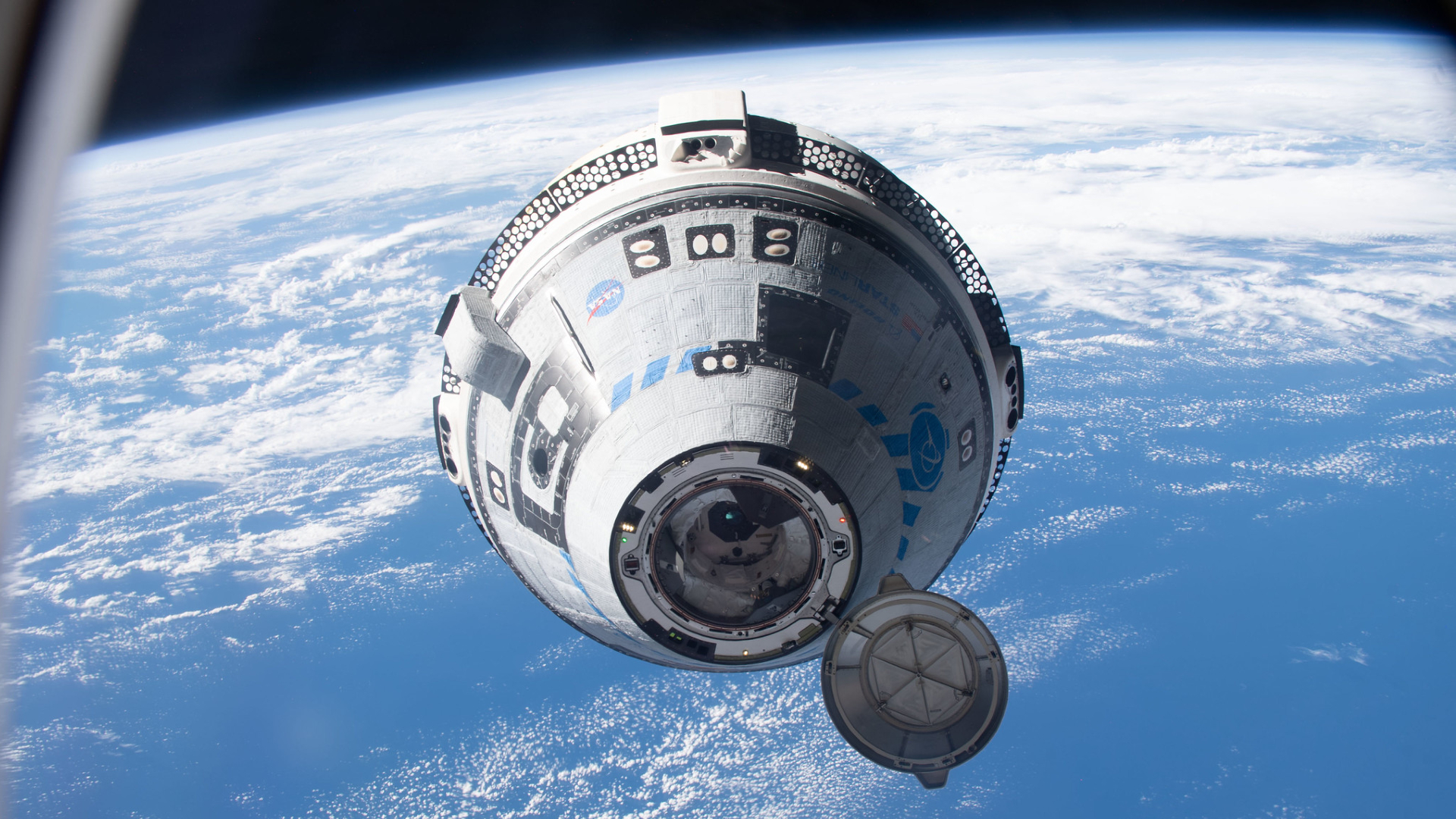Supermassive black holes eat more quickly than expected, 3D simulations suggest
The black holes at the heart of galaxies have an unexpected delivery service that helps them feed over months rather than hundreds of years.
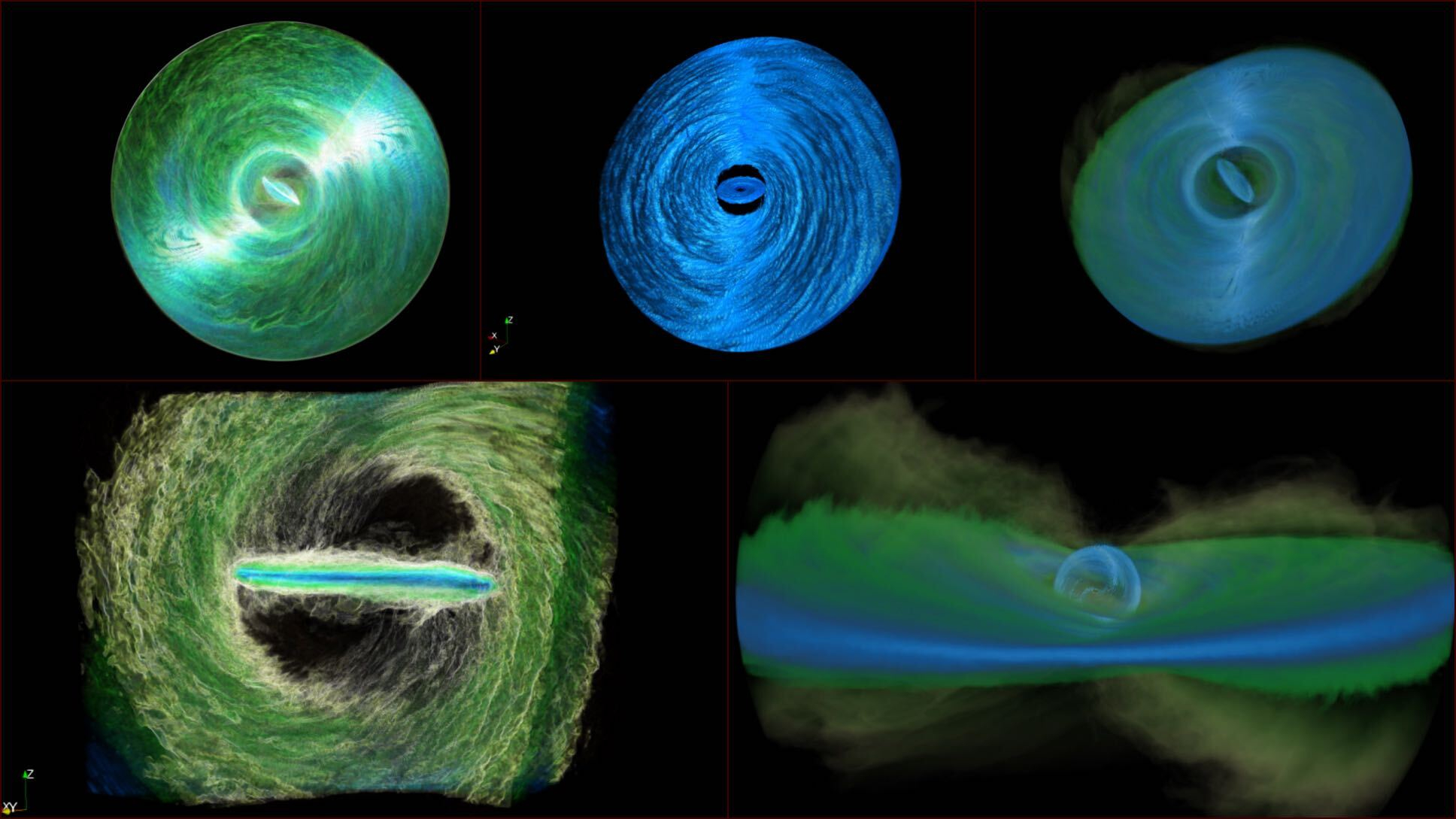
Supermassive black holes may have a completely unexpected cosmic delivery service supplying them with gas and dust to feast on. This could result in the cosmic titans feeding much faster than scientists had expected, gorging themselves over a period of months rather than hundreds or even thousands of years.
Supermassive black holes with masses of millions or even billions of times that of the sun are believed to dwell at the hearts of most galaxies, and when they are surrounded by vast plates of gas and dust called accretion disks, they power quasars. Quasars are the bright hearts of active galaxies that are so luminous they can outshine the combined light of every star in the entire galaxy around them.
These new findings about black hole feeding rates could thus help shed light on how supermassive void gobble up surrounding material and how that process influences the evolution of galaxies.
Related: Heart of the 'Squid Galaxy' reveals how supermassive black holes dictate galactic chemistry
The research is the result of high-resolution 3D simulations performed by a team of scientists who set out to understand black hole dynamics and ended up capturing a surprisingly quick feeding rate of these elusive phenomena. Moreover, this increased rate may be supported by real-world observations of quasars as well, some of which brighten and fade with a timescale of months.
"How gas gets to a black hole to feed it is the central question in accretion-disk physics," Nick Kaaz, team leader and an astronomer at Northwestern University, said in a statement. "If you know how that happens, it will tell you how long the disk lasts, how bright it is, and what the light should look like when we observe it with telescopes."
Supermassive black holes are such a drag at mealtimes
Supermassive black holes are so massive that when they spin, they drag the very fabric of space and time along with them, a phenomenon called "frame dragging" or the "Lense-Thirring effect." 3D simulations performed using the Summit supercomputer at Oak Ridge National Laboratory showed that this twisting of space rips up accretion disks and causes them to split into inner and outer "subdisks."
Breaking space news, the latest updates on rocket launches, skywatching events and more!
Supermassive black holes treat the inner disk as an appetizer, in a way, because they start their dinner by devouring gas and dust found there first. As this is happening, matter from the outer disk filters in, eventually filling in gaps left behind by the black hole devouring the inner disk. This filled-in disk then becomes the main course, allowing the feeding process to start all over again.
The black hole's entire cosmic dining experience of eating, refilling, then eating again can proceed over a matter of mere months, the team’s simulations suggested, which is radically more rapid than previously calculated timescales. This may ultimately explain why some quasars flash quickly and then disappear.
"Classical accretion disk theory predicts that the disk evolves slowly," Kaaz said. "But some quasars — which result from black holes eating gas from their accretion disks — appear to drastically change over time scales of months to years. This variation is so drastic."
Kaaz, who is also a member of the Center for Interdisciplinary Exploration and Research in Astrophysics (CIERA), added that from the simulations, it looks like the inner part of the disk — where most of the light of a quasar comes from — gets destroyed and then replenished.
"Classical accretion disk theory cannot explain this drastic variation," he said. "But the phenomena we see in our simulations potentially could explain this. The quick brightening and dimming are consistent with the inner regions of the disk being destroyed."
Supermassive black holes eat from gyroscopes instead of plates
Some scientists have suggested that accretion disks surrounding supermassive black holes are quite well-ordered despite the violent conditions they experience thanks to the gravitational influence of the supermassive black holes sitting at their centers. Due to this influence, gas and dust in accretion disks orbit black holes while staying in the same plane and spinning in the same direction as the voids, with gas very gradually falling to the outer boundary of the black hole. That boundary is known as the event horizon.
"For decades, people made a very big assumption that accretion disks were aligned with the black hole’s rotation," Kaaz said. "But the gas that feeds these black holes doesn’t necessarily know which way the black hole is rotating, so why would they automatically be aligned? Changing the alignment drastically changes the picture."
This newly presented picture indicates a more messy and turbulent environment around a feeding supermassive black hole.
At the heart of this is the Lense-Thirring effect, which gets stronger as you move closer to the central black hole, causing accretion disks to wobble and the innermost region to spin faster. This is comparable to a spinning top, which begins to wobble as it slows down, but the wobble of the inner accretion is more extreme than that of the outer disk.
This warps the entire disk system and causes gas from different regions to smash into each other, creating bright shocks and driving material ever closer to the supermassive black hole itself. Eventually, the wobbling effect becomes so strong that the accretion disk splits. The resultant inner and outer disks evolve separately and develop different wobbles. At that point, the entire accretion disk is more like the rings of a gyroscope rather than a spinning plate.
"When the inner disk tears off, it will precess independently," Kaaz said. "It precesses faster because it’s closer to the black hole and because it’s small, so it’s easier to move."
Simulations created by the team indicated that the frenzied feeding of the supermassive black holes starts at the break, or "tearing region," between the inner and outer disks. Further, this happens as friction attempts to unify the disks while the Lense-Thirring effect further wrenches them apart.
"There is competition between the rotation of the black hole and the friction and pressure inside the disk," Kaaz said. "The tearing region is where the black hole wins. The inner and outer disks collide into each other. The outer disk shaves off layers of the inner disk, pushing it inwards."
Because the disks are oriented at different angles, the outer disk pours matter onto the inner disk, which pushes the inner disk closer to the black hole, speeding up the rate at which it is swallowed by the black hole. As this happens, the immense gravity of the black hole pulls in the outer disk, forcing it to take the place of the inner disk.
"The inner region of an accretion disk, where most of the brightness comes from, can totally disappear — really quickly over months," Kaaz said. "We basically see it go away entirely. The system stops being bright. Then, it brightens again and the process repeats. Conventional theory doesn’t have any way to explain why it disappears in the first place, and it doesn’t explain how it refills so quickly."
The team’s research was presented on Wednesday (Sept. 20) in The Astrophysical Journal.

Robert Lea is a science journalist in the U.K. whose articles have been published in Physics World, New Scientist, Astronomy Magazine, All About Space, Newsweek and ZME Science. He also writes about science communication for Elsevier and the European Journal of Physics. Rob holds a bachelor of science degree in physics and astronomy from the U.K.’s Open University. Follow him on Twitter @sciencef1rst.
